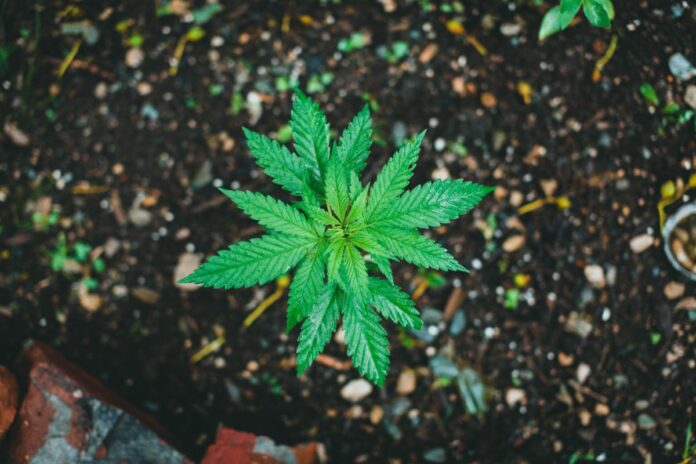Growing cannabis outdoors isn’t just a science; it’s an art form. Whether you’re a hobbyist or looking to scale up, this guide is here to help you on your journey to outdoor cannabis cultivation. From understanding the plant to choosing the right spot and caring for your garden, we’ll cover it all.
Getting Started
Understanding Cannabis: A Plant Like No Other
Cannabis, or “weed” as it’s often called, is a fascinating and resilient plant. When you grow it outdoors, it can offer unique flavors and a generous harvest. But to get there, you need to know what it needs. Cannabis plants can grow up to 14 feet tall and produce 4–8 pounds of quality weed per plant. Understanding its growth cycle, sunlight requirements, and soil preferences is key to a successful garden.
Picking Your Seeds: The Beginning of Something Beautiful
The seeds you choose are the foundation of your entire garden. Female plants are the ones that produce the buds, so consider starting with clones. Take your time and choose strains that you connect with. Different strains have different characteristics, including flavor, aroma, and growth patterns. Researching and selecting the right strain for your preferences and location can make a significant difference in your growing experience.
Planting Time: Timing Is Everything
Planting at the right time of year, usually between April and May, sets you up for success. It’s a simple step, but it makes a big difference. The timing aligns with the natural growth cycle of the plant, allowing it to flourish in the outdoor environment. Planning your outdoor weed season carefully can lead to a harvest between August and October, depending on the variety you choose.
Legal Stuff: Know the Rules
Before you even think about planting, make sure you know the legal landscape in your area. It’s not just the responsible thing to do; it’s essential. Some regions may require participation in a medical program, registration of plants, or limit the number of plants you can grow. Understanding and complying with these regulations is a crucial first step in your growing journey.
Finding That Perfect Spot
Climate and Location: It’s All About Balance
Your garden’s climate and location are vital. Aim for daytime temperatures of 70-85°F and make sure your plants get plenty of sunlight. Your soil’s drainage is also key, so consider mixing in some perlite. The ideal location will also provide protection from harsh weather and allow for good airflow.
Sunlight: Your Plants’ Best Friend
Sunlight is what makes your plants grow strong and healthy. Find a spot that gets lots of sun but also allows for good airflow to keep things cool. Observing how sunlight moves through your garden over the course of a day can help you choose the best spot.
Shelter: Keeping Your Plants Safe
Weather can be unpredictable. Use natural shelter like shrubs, trees, and fences to protect your plants, but don’t block out the sun. Striking the right balance between sunlight and wind exposure can protect your plants without hindering their growth.
Soil and Planting: Building a Strong Foundation
Whether you’re planting in the ground or using pots, your soil’s quality will make or break your garden. Think about what your soil needs to help your plants thrive. In-ground cultivation allows for towering growth, while pots offer mobility and control over water evaporation.
Growing Success
Water: Not Too Much, Not Too Little
Water is life, but it needs to be managed properly. Consider a drip irrigation system and keep an eye on your soil’s moisture. Regular watering and high-nitrogen fertilizer during the vegetative phase are vital for healthy growth.
Fertilizing: What’s on the Menu?
Your plants need a balanced diet. Regular feeding with the right nutrients will help them grow big and strong. Understanding the nutritional needs of your specific strain can lead to a more bountiful harvest.
Pest Control: Protecting Your Investment
Keep those pesky bugs away with natural repellents and careful monitoring. Planting natural insect repellents like rosemary, marigold, and basil around your weed can be an effective strategy.
Harvest Time: The Moment You’ve Been Waiting For
When those buds’ hairs turn reddish-brown, it’s time to harvest. Enjoy the fruits of your labor; you’ve earned it. The timing of the harvest can affect the flavor and potency of the buds, so keep a close eye on your plants as they mature.
Find more growing techniques here.
Conclusion
Growing cannabis outdoors is a rewarding experience that requires planning, understanding, and a love for the plant. With this guide, you have the tools and knowledge to create a thriving cannabis garden. Here’s to a successful growing season, filled with the joy of nurturing your plants and the satisfaction of a bountiful harvest.
FAQs
- What’s good about growing cannabis in pots? Pots give you flexibility and control, letting you move plants as needed.
- How do I keep my cannabis garden from getting too hot? Stay away from heat-reflecting surfaces and make sure there’s enough airflow.
- What kind of soil does cannabis like? Soil that drains well and is enriched with organic matter is your best bet.
- How do I keep my outdoor cannabis plants safe from bad weather? Use natural shelter and think about the wind direction.
- Can I grow cannabis outdoors anywhere? With the right planning and consideration of sunlight, shelter, and soil, many climates can work.


